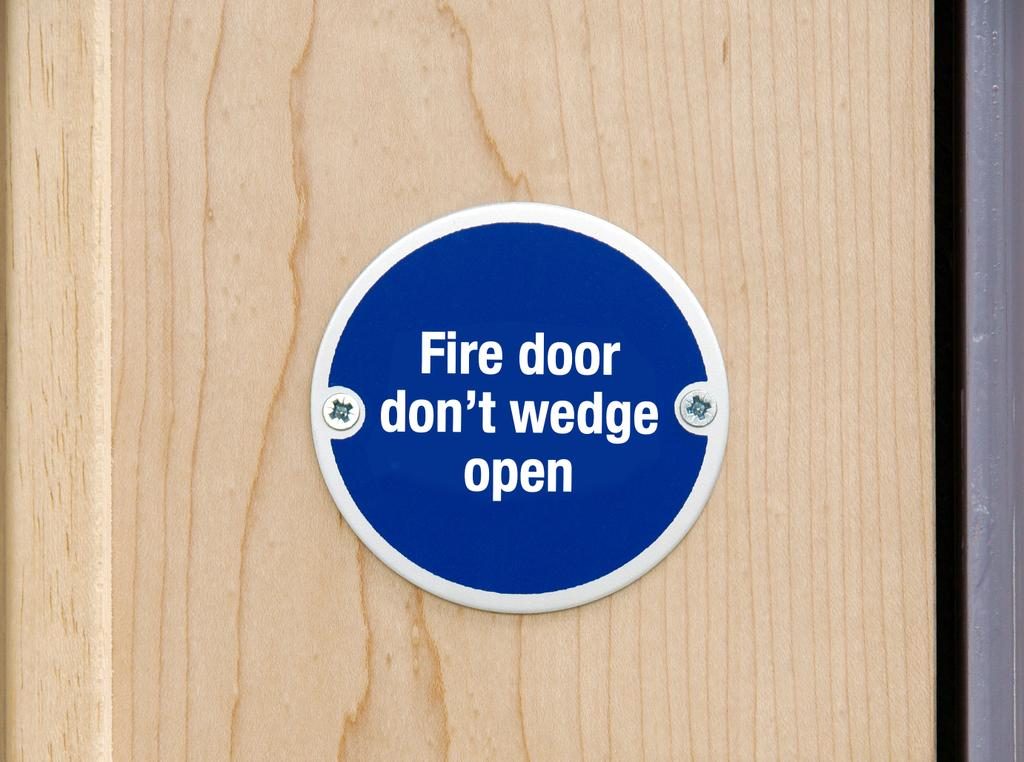Wedged-open fire doors within the buildings where you live or work?
You are literally playing with fire.
Close the fire door to danger, urges new campaign
In the 350th anniversary year of the Great Fire of London, a social media campaign to spur us all towards greater fire safety has been launched by the BWF-Certifire fire door and doorset scheme.
The #ClickItKickIt campaign is encouraging people to stop the practice of wedging open fire doors. Everyone using a building where they see a fire door wedged open is being urged to take a photo (Click It) to share on social media using the hashtag #ClickItKickIt, and then to kick the wedge away (Kick It) so the door can close, and report it to the building owner or manager.
Any wedges donated to BWF-Certifire during the campaign will also be used to create a sculpture which will be on put on display in London on 2 September, 350 years to the day since the Great Fire of London started in 1666.
Hannah Mansell, BWF-Certifire scheme manager, said:
“A wedged-open fire door renders it completely useless. It can no longer protect your own safety, your loved ones or your property. It’s an open door to danger, and those responsible for the fire safety within a building that they own or manage are literally playing with fire if they condone or ignore the use of fire door wedges.
“The #ClickItKickIt campaign is designed to highlight the deadly yet seemingly innocuous fire door wedge. We want to photograph and share the location of every office, hotel, hospital, school or other building where an internal fire door is dangerously wedged open.
“We also want to collect redundant wedges for a piece of art that will highlight the widespread misuse and risk associated with these objects. Anyone can take part.”
Alarmingly, the latest Government statistics show that there were 213 deaths and more than 6,700 casualties from building fires in England in the six months of April to September 2015. Full year figures are likely to show a significant increase on previous years, and Chief Fire Officers from many of England’s largest cities have already raised their concerns about this trend.
Wedges can legitimately be used for temporary purposes – for example, if someone needs to prop open a door while moving a large item – when it’s been included in the risk assessment for that activity. Some doors are fitted with automatic hold-open devices, connected to the fire alarm, which will close in the event of a fire.
But in reality, wedges are used all the time in a wide range of public buildings, with the result that the vital fire compartmentation of that building is broken.
Every fire develops differently, but after the initial flashover at the early stage of a fire, it is usually accepted that the temperature can rise to hundreds of degrees Celsius within minutes and rooms or corridors can very quickly become smoke-logged (with smoke which is usually highly toxic) within seconds if a fire door is wedged open.
A well-maintained, fully closed fire door fitted with the correct perimeter smoke seals can help protect people from those dangers for half an hour or more, critically giving time to escape or seek refuge, and providing the safe and protected route into the building for emergency services to come to our aid.
The BWF-Certifire scheme promotes the use of such third-party certificated fire doors and components that have been rigorously assessed and audited. Through the scheme, about 3 million fire doors are tested and certified each year, accounting for approximately 70% of the market. Third-party certification verifies a fire door’s design, performance, manufacturing process and quality assurance from manufacture to installation.
The BWF-Certifire scheme is the leading authority on fire door safety. It provides technical information, support and guidance to manufacturers, specifiers and installers of fire doors and related products, and runs the Fire Door Safety Week national awareness campaign every September.
Article reproduced by kind permission of the Fire Door Safety Week website.

